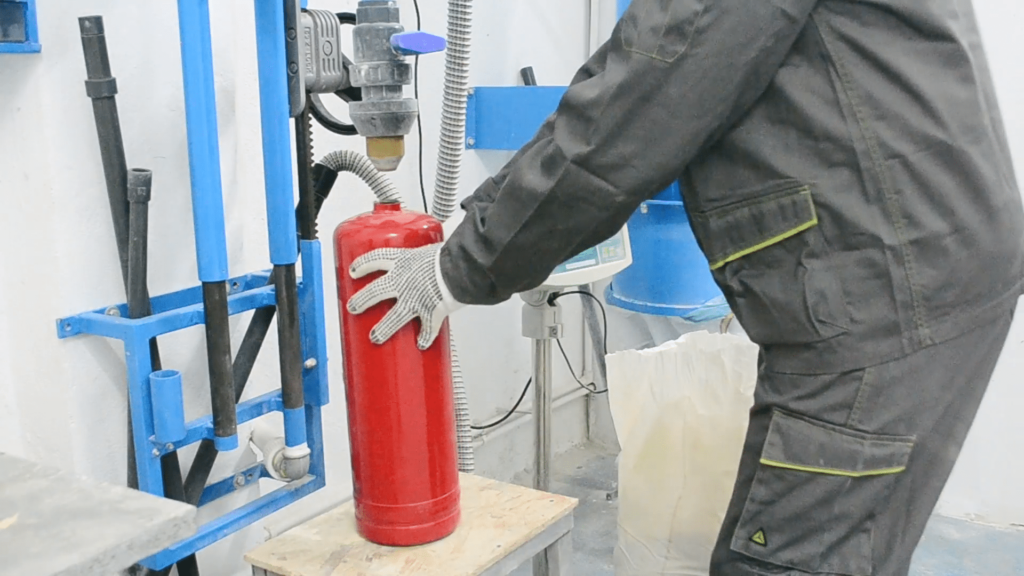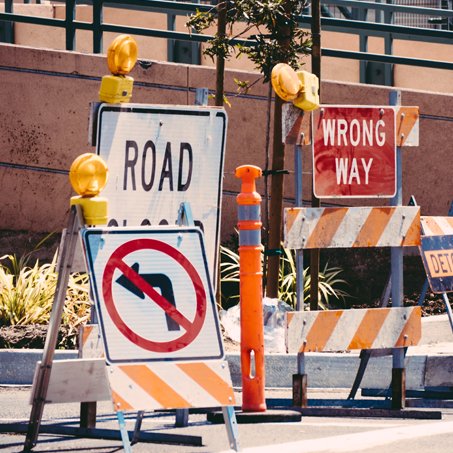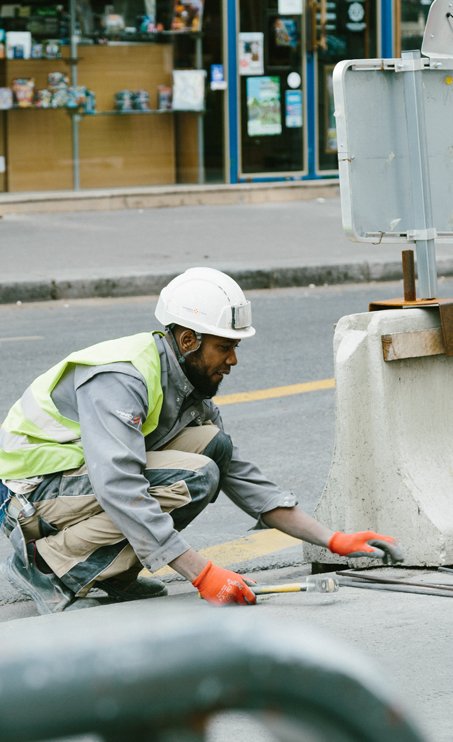Introduction:
Fire extinguishers are a critical line of defense against fires in homes, businesses, and other environments. These life-saving devices can help contain and extinguish small fires before they grow out of control.
However, like any safety equipment, fire extinguishers require regular maintenance to ensure they function properly during an emergency. Neglecting to refill or service your fire extinguishers can render them ineffective when you need them most.
Keeping your fire extinguishers properly filled and in working order isn’t just a smart idea—it’s often legally required. Building and fire codes mandate that property owners maintain their fire extinguishers according to strict standards. Failure to do so can result in costly fines or put your property at risk during an inspection.
This comprehensive guide aims to provide all the essential information you need about fire extinguisher refilling. We’ll cover when to refill, how to find a reputable service provider, typical costs, expiry periods for different types, and much more.
By the end, you’ll understand the importance of this critical maintenance task and have the knowledge to keep your fire extinguishers ready to protect your property and loved ones.
What is Fire Extinguisher Refilling?
Fire extinguisher refilling is the process of replenishing the extinguishing agent inside a fire extinguisher after it has been used or has expired. This process is crucial to ensure that the fire extinguisher remains functional and ready for use in case of a fire emergency.
Regular refilling and maintenance of fire extinguishers are essential for several reasons:
- Safety: A properly filled and maintained fire extinguisher can mean the difference between quickly containing a small fire and allowing it to grow into a life-threatening blaze.
- Compliance: Most building codes and fire regulations require property owners to maintain their fire extinguishers in good working condition, with regular refilling and inspections mandated.
- Reliability: When an emergency strikes, you want to have the assurance that your fire extinguisher will operate correctly. Regular refilling and maintenance ensure that the extinguisher is always ready to perform when needed.
Neglecting to refill or service your fire extinguishers can have severe consequences, including potential liability issues, failed inspections, and, most importantly, compromised safety in the event of a fire.
By understanding the importance of fire extinguisher refilling and adhering to recommended maintenance schedules, you can help protect your property, assets, and loved ones from the devastating effects of fires.
Why Fire Extinguisher Refilling Matters?
Regular fire extinguisher refilling is crucial to ensure that these life-saving devices function effectively when they’re needed most. Neglecting this essential maintenance task can have severe consequences and compromise the safety of your property and loved ones.
Fire extinguishers are designed to be used only once. After being discharged, even partially, the extinguishing agent must be replenished to restore the extinguisher’s full capacity. Over time, the extinguishing agent can also lose its potency or become contaminated, rendering the extinguisher ineffective.
Using an expired or partially filled fire extinguisher can be extremely dangerous and potentially life-threatening. Here are some critical reasons why fire extinguisher refilling matters:
- Reduced Effectiveness: An expired or partially filled extinguisher may not have enough extinguishing agent to put out a fire effectively. This can allow the fire to grow and spread rapidly, putting lives and property at risk.
- Decreased Operating Time: Fire extinguishers have a limited operating time, even when fully charged. A partially filled extinguisher will have an even shorter operating time, which may not be enough to control or extinguish the fire.
- Potential Hazards: Some types of extinguishers, such as those containing compressed gas, can become hazardous if not properly maintained and refilled. Expired or damaged extinguishers may leak or rupture, creating additional safety risks.
- Failed Inspections: Most building codes and fire regulations require property owners to maintain their fire extinguishers in good working condition, with regular refilling and inspections mandated. Failing to comply with these regulations can result in costly fines or penalties.
- Liability Issues: In the event of a fire, using an expired or improperly maintained fire extinguisher can expose you to potential liability issues if it fails to operate correctly or causes additional damage.
Regular refilling and maintenance of fire extinguishers ensure safety, compliance with regulations, and peace of mind, providing a reliable line of defense against fires.
Different Types of Fire Extinguishers and Their Refilling Needs
Fire extinguishers come in various types, each designed to tackle specific types of fires. The refilling needs and procedures vary depending on the extinguishing agent used in the device. Here’s an overview of the different types of fire extinguishers and their refilling requirements:
Water Fire Extinguishers:
- Suitable for Class A fires (ordinary combustible materials like paper, wood, and cloth)
- Refilling involves replacing the water and adding any necessary additives
- Typically need refilling every 5 years or after use
Foam Fire Extinguishers:
- Effective against Class A and Class B fires (flammable liquids like gasoline, oils, and paints)
- Refilling requires replacing the foam concentrate and pressurizing the cylinder
- Should be refilled every 5-6 years or after use
Dry Powder Fire Extinguishers:
- Suitable for Class A, B, and C fires (energized electrical equipment)
- Refilling involves replacing the dry chemical powder and repressurizing the cylinder
- Recommended refilling interval is 6 years or after use
Carbon Dioxide (CO2) Fire Extinguishers:
- Effective against Class B and C fires
- Refilling requires replacing the CO2 and recharging the cylinder
- Should be refilled every 5 years or after use, as the CO2 can slowly dissipate over time
Wet Chemical Fire Extinguishers:
- Designed for Class K fires (cooking oils and greases)
- Refilling involves replacing the wet chemical solution and repressurizing the cylinder
- Recommended refilling interval is 6 years or after use
It’s important to note that fire extinguishers should be refilled by trained professionals who follow the manufacturer’s instructions and use the correct extinguishing agents. Attempting to refill a fire extinguisher improperly can compromise its effectiveness and safety.
Despite not being used, it’s crucial to inspect and refill a fire extinguisher according to the manufacturer’s schedule to maintain its potency and readiness for use.
When To Refill Your Fire Extinguisher Cylinder
Proper fire extinguisher maintenance involves refilling the cylinder at specific intervals to ensure the device remains functional and ready for use. Understanding when to refill your fire extinguisher is crucial for maintaining fire safety and compliance with regulations.
Here are the key situations that require refilling:
- After Use: Fire extinguishers must be refilled immediately after any use, even if only partially discharged. The extinguishing agent needs to be replenished to restore the device’s full capacity.
- Regular Maintenance Schedule: Even if unused, fire extinguishers require routine refilling based on the manufacturer’s recommendations and industry standards. This is typically every 6 to 12 years from the manufacturing date, depending on the extinguisher type. Regular refilling ensures the extinguishing agent remains potent and the cylinder is properly pressurized.
- Visual Inspection Findings: During regular visual inspections, if any signs of damage, dents, or depressurization are detected, the fire extinguisher should be refilled or serviced by a professional. Environmental factors like temperature fluctuations or physical impacts can compromise the extinguisher’s integrity, necessitating refilling or maintenance.
- Expired Certification: Most fire extinguishers have a certification that expires after a certain period, usually 6 to 12 years from the manufacturing date or the last professional service. When this certification expires, the extinguisher must be refilled, inspected, and recertified by a trained professional.
Neglecting to refill your fire extinguisher when required can render it ineffective during an emergency. By adhering to the recommended refilling schedule and promptly addressing any signs of wear or use, you can ensure your fire extinguishers are always ready to perform when needed, protecting your property, assets, and loved ones from the devastating effects of fires.
What is the Refilling Process of a Fire Extinguisher Cylinder?
- Inspection: The extinguisher is thoroughly inspected for any damage, leaks, or corrosion. The pressure gauge, hose, and other components are also checked.
- Discharging: If the extinguisher still contains any extinguishing agent, it is safely discharged and depressurized.
- Disassembly: The extinguisher is carefully disassembled, and the internal components are cleaned and inspected.
- Refilling: The appropriate type and amount of new extinguishing agent is refilled into the cylinder based on the manufacturer’s specifications.
- Pressurisation: The cylinder is pressurized with the correct type and quantity of expellant gas, typically nitrogen or dry air.
- Reassembly: All components are reassembled, and the extinguisher is properly sealed and secured.
- Testing: The refilled extinguisher undergoes various tests, such as pressure testing and leak checks, to ensure it is functioning correctly.
- Certification: Once all tests are passed, the extinguisher is labeled with a new service date and certified for use.
The refilling process should only be performed by trained and certified professionals who follow the manufacturer’s guidelines and local regulations. Proper equipment, materials, and safety procedures are essential to ensure the refilled extinguisher meets all quality and performance standards.
Expiry Periods and Refilling Intervals of Fire Cylinder
The expiry period and recommended refilling interval for a fire extinguisher can vary depending on the type of extinguishing agent and the manufacturer’s specifications. Here’s an overview of the typical fire extinguisher refilling expiry periods and intervals for different types of fire cylinders refilling:
Water-Based Fire Extinguishers:
- Expiry Period: 5 years from the date of manufacture or last professional service
- Recommended Refilling Interval: Every 5 years or after use
Foam Fire Extinguishers:
- Expiry Period: 5-6 years from the date of manufacture or last professional service
- Recommended Refilling Interval: Every 5-6 years or after use
Dry Chemical Fire Extinguishers:
- Expiry Period: 6 years from the date of manufacture or last professional service
- Recommended Refilling Interval: Every 6 years or after use
Carbon Dioxide (CO2) Fire Extinguishers:
- Co2 fire extinguisher refilling expiry period 5 years from the date of manufacture or last professional service
- Recommended Refilling Interval: Every 5 years or after use (CO2 can dissipate over time)
Wet Chemical Fire Extinguishers:
- Expiry Period: 6 years from the date of manufacture or last professional service
- Recommended Refilling Interval: Every 6 years or after use
It’s important to note that these are general guidelines, and the specific expiry period and refilling interval may vary based on the manufacturer’s recommendations and local regulations.
Additionally, several factors can affect the refilling frequency of a fire extinguisher, including:
- Usage: Fire extinguishers must be refilled immediately after any use, even if only partially discharged.
- Environmental Conditions: Exposure to extreme temperatures, humidity, or corrosive environments can accelerate the degradation of the extinguishing agent or the cylinder itself, necessitating more frequent refilling.
- Damage or Wear: Physical damage, dents, or signs of wear on the extinguisher may require refilling or servicing, even if the expiry date has not been reached.
Regular visual inspections and adherence to the manufacturer’s guidelines are crucial to ensure your fire extinguishers remain in peak operating condition and are ready to perform when needed.
What is the Fire Extinguisher Refilling Price?
The cost of refilling a fire extinguisher in India varies based on various factors, including the type of extinguisher, service provider, and location. Water-based extinguishers cost between ₹200-₹500, while dry chemical extinguishers range from ₹300-₹800. CO2 extinguishers cost between ₹400-₹1,000, foam extinguishers from ₹500-₹1,200, and wet chemical extinguishers from ₹800-₹1,500. Local fire equipment companies may offer lower prices compared to nationwide chains or specialized services.
Urban areas or densely populated regions may have higher service costs due to higher operating expenses. Additional services like hydrostatic testing and replacement parts can also increase the cost. To save on refilling costs, consider bulk discounts, annual contracts, routine maintenance, and comparing quotes from multiple service providers.
Safety and reliability should be the primary concern, as cutting corners or using unlicensed services can compromise these life-saving devices.
How to maintain and inspect fire extinguishers?
Regular maintenance and inspection of fire extinguishers are essential for their functionality and safety. Conducting monthly visual inspections ensures the extinguisher is visible, accessible, and in operable range.
Check for signs of damage, corrosion, leakage, or impairment, and ensure the tamper seal is intact. The last professional service date on the inspection tag should not expire. Engage a licensed fire equipment professional for an annual maintenance service, which includes a thorough examination, recharging or replacement of the extinguishing agent, and necessary repairs or component replacements.
Keep detailed records of inspections, maintenance services, and incidents to track compliance and plan future replacements. Follow manufacturer’s instructions for specific maintenance and inspection requirements, adhering to recommended replacement intervals or service schedules.
Regular maintenance not only ensures compliance with regulations but also provides peace of mind in case of a fire emergency.
Fire Extinguisher Refilling Near You
Ladwa Solutions Inc. is a trusted provider of fire safety equipment and fire extinguisher refilling services in Bangalore and surrounding areas. They offer professional fire extinguisher refilling services, using high-quality, approved agents and materials. They cover a wide range of extinguisher types, including water-based, dry chemical, CO2, foam, and wet chemical extinguishers.
Ladwa Solutions also provides comprehensive maintenance services, including hydrostatic testing, visual inspections, repairs, and component replacements. They provide detailed documentation and certification to ensure compliance with local regulations and building codes.
With convenient service locations across Bangalore, Ladwa Solutions is a trusted partner for businesses and individuals in the region. Contact them today to schedule a fire extinguisher refilling service and ensure your extinguishers are always ready to protect your property and loved ones.
Conclusion:
Fire extinguishers are critical life-saving devices that can mean the difference between containing a small fire and facing a devastating blaze. However, their effectiveness depends heavily on proper maintenance and regular refilling.
Throughout this comprehensive guide, we’ve covered the importance of fire extinguisher refilling, the different types of extinguishers and their refilling requirements, when to refill, the refilling process, typical costs, and relevant regulations.
The key takeaways are:
- Fire extinguishers must be refilled immediately after any use, even if only partially discharged.
- Regular refilling intervals, typically ranging from 5 to 12 years depending on the extinguisher type, are essential to ensure the extinguishing agent remains potent and the device functions correctly.
- Factors such as usage, environmental conditions, and physical damage can also necessitate refilling, even before the recommended interval.
- Neglecting to refill or maintain your fire extinguishers can compromise their effectiveness, expose you to liability issues, and put your property and loved ones at risk.
Regular fire extinguisher refilling is not just a legal requirement; it’s a crucial step in ensuring your safety and peace of mind. By adhering to recommended maintenance schedules and enlisting the services of Ladwa Solution Inc., qualified professionals, you can rest assured that your fire extinguishers will be ready to perform when you need them most.
Ladwa Solution Inc. has the expertise and commitment to industry standards to properly refill, test, and certify your fire extinguishers for optimal performance. Don’t compromise on fire safety – trust the professionals at Ladwa Solution Inc. to keep your extinguishers in top condition.
Don’t take chances with fire safety. Contact Ladwa Fire Services, a reputable and licensed fire equipment service provider, to schedule your fire extinguisher refilling and maintenance. Their expertise and adherence to industry standards will ensure your extinguishers are properly refilled, tested, and certified for optimal performance. Call or visit their website to book your service today.
Remember, a well-maintained fire extinguisher can be a lifesaver in an emergency. Make fire extinguisher refilling a priority to protect what matters most.











